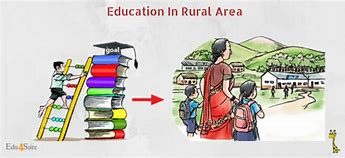Islamabad, Dec 30: Providing quality education in rural areas presents numerous challenges that impact both the availability and effectiveness of educational resources. These challenges are complex and require multi-dimensional strategies to overcome.
1. Limited Access to Infrastructure
In rural areas, there is often a severe lack of basic educational infrastructure, such as:
- Insufficient schools: Many rural areas have fewer schools, leading to overcrowded classrooms or long travel distances for students.
- Poor facilities: Existing schools might lack essential resources like classrooms, toilets, clean drinking water, and electricity.
- Technology gap: There is also a significant gap in access to technology and digital learning tools. This makes it difficult for rural students to compete with their urban counterparts who benefit from modern educational tools.
2. Teacher Shortages and Low Quality of Education
Teacher-related issues are a major challenge in rural education:
- Inadequate number of qualified teachers: Many rural areas suffer from a shortage of qualified teachers, especially in subjects like science, math, and foreign languages.
- Teacher retention: Teachers in rural areas often face challenges such as low salaries, limited career advancement opportunities, and poor working conditions. This leads to high turnover rates, further exacerbating the lack of continuity in education.
- Lack of professional development: Teachers in rural areas often do not have access to continuous training or professional development programs, which affects the quality of instruction.
3. Economic Constraints
The economic conditions in rural areas also hinder the provision of quality education:
- Poverty: Many families in rural areas struggle to meet basic needs, making it difficult to prioritize education. As a result, children may drop out of school to work or help with family responsibilities.
- Lack of educational materials: Due to limited funding, rural schools often lack textbooks, library resources, and even basic stationery. This limits the educational experience for students and stunts their intellectual development.
4. Cultural and Societal Barriers
Cultural norms and societal structures in rural areas can also pose significant barriers:
- Gender inequality: In many rural communities, girls are less likely to receive an education due to cultural beliefs that prioritize boys’ education or restrict girls’ mobility.
- Child labor: Children in rural areas are often expected to help with farming or household chores, which can interfere with their education.
- Resistance to change: There is sometimes resistance to modern educational methods or curriculums, with communities preferring traditional learning styles that may not align with current educational standards.
5. Geographical Challenges
The geographical setting of rural areas presents unique challenges for education:
- Remote locations: Schools located in remote areas are often difficult to reach, especially during harsh weather conditions, which may cause irregular school attendance.
- Transportation issues: Limited access to transportation means that students often have to walk long distances to attend school, which can be dangerous or tiring.
However, there are these following challenges facing education in the rural areas Though these challenges are huge there are existing solutions coming from the government as well as from non-governmental organization and international communities.
These solutions are development oriented where some are providing mobile classroom, online education, developing infrastructure and reducing the gap between rural and urban education.
To eradicate these problems collectively, efforts to build the future of rural students are going to be more fruitful in the future. If these challenges are well understood and addressed therefore, the stakeholders can be able to make education for children not a preserve of a few or a dream for few, but a right for every child across the globe.
